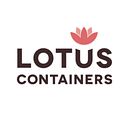How to seal a shipping container?

Container seals are used to seal a shipping container for any unauthorised access that causes tampering, theft, or mishandling of the cargo placed inside the freight containers. Container seals are crucial, especially in the case of international shipments, as they are transported over long distances and handled by various transportation modes. So, there are risks associated with theft or cargo damage if the containers are not sealed properly. Let us learn how to seal shipping containers for international trade properly.
What do you mean by a container seal?
Container seals, also known as ‘one-time door locks’, are temporary locks on the doors of shipping containers attached to the locking rods. At times, they are also referred to as cargo seals or shipping seals. They are a security device that seals the container from any external harm. Container seals can be used on any shipping container and vary between one to six seals per container. Usually, only two seals are enough to seal the containers being loaded onto various modes of transport. A container seal cannot be opened and sealed more than once, and therefore, a container is sealed at its origin and only broken upon reaching its destination. The intact seal is proof of container and cargo integrity upon reaching the delivery location. If the container seal is broken, it is evidence of tampering or unauthorised access during cargo transportation.
What are the types of container seals?
Different types of container seals are used in the shipping industry to seal containers. These seal designs vary as they use various materials to secure different types of cargo.
- Bolt seal- These are tamper-evident seals designed to secure shipping containers using a metal bolt as a locking mechanism. The bolt is inserted into the locking space of the container door and is sealed shut. Bolt seals are solid and tamper-resistant.
- Cable seal- These are flexible and versatile container seals made of steel cables to secure the container. The cable can be threaded through various points and fixed on the container locking space to avoid cargo tampering or damage.
- E-seal- These are RFID seals equipped with radio frequency identification (RFID) technology for offering real-time information about the shipping container. RFID are modern high-security seals embedded with RFID tags that can be read through an RFID reader.
Why should we seal a shipping container?
- Container seals are a barrier to unauthorised access and ensure the cargo’s security and integrity.
- A container seal number on the seal is recorded and documented at the origin-destination, which is noted in the bill of lading and can be used for tracking the container.
- International shipments must be sealed, as many importing countries take container seals for regulatory compliance. It ensures that the container has not been tampered with during its transit.
- Cargo insurance is a part of the trade business. The insurance companies ask for container seals to be put onto containers to minimise the risk of theft or cargo damage.
Steps to seal a shipping container
- The shipper or the shipping company must select the correct type of container seal based on the security requirements of the cargo.
- Pack, arrange, and securely load the cargo on the shipping container. The shipment placement inside the container must be away from container doors so that it does not pressure the doors and the lock inside the container.
- Check if the locking rods are in place. There are two locking rods on each container door where the seals are fixed.
- Verify the condition and quality of the container seal before fixing it. Also, note that the container seal number is present on the seal.
- Shut the container doors by closing the left door, followed by the right one.
- Separate the base and pin of the seal to insert it into the locking space.
- Carefully place the seal parts in the bolt space of the right container door.
- Push the pin and the base against each other. A clicking sound is a confirmation that the container is sealed correctly.
- Note down the container seal number for documentation and references.
These steps to seal a shipping container helps ensure the container is locked correctly and its contents are secure and ready for transit.
LOTUS Containers is a leading global shipping container seller and partners with 300+ container depots. We also offer container leasing services for all types of shipping containers.
